This study is a testament to the collaborative efforts of numerous industry experts.
Praneeth Anand, Director of Remo Research Lab, with his proficiency in developing consumer-friendly data recovery and management products for over two decades, enhanced the depth of our research.
Special thanks to Dr. Madanmohan Rao, who has authored over 15 books on knowledge management, innovation, and digital media and has given talks, lectures and workshops in over 90 countries around the world. His inputs were crucial in the execution of the report.
Additionally, we extend our gratitude to Jason Foodman, C-Suite executive and regular Board member with global operating experience, Forbes Business Council Member and seasoned Entrepreneur, for collaborating on this research.
Omer Faiyaz, CEO of Remo Software, lend his more than 25 years of invaluable expertise in the tech industry and data recovery field.
Finally, this data loss report of 2023 wouldn't be possible without the invaluable insights of our global partnered tech experts, Michael Graw and John William Morales, who validated and contributed to our report.
Taking everything, we saw in 2023 into account, let’s take a look at all the ways in which people lost their data.
The Many Roads to Data Loss
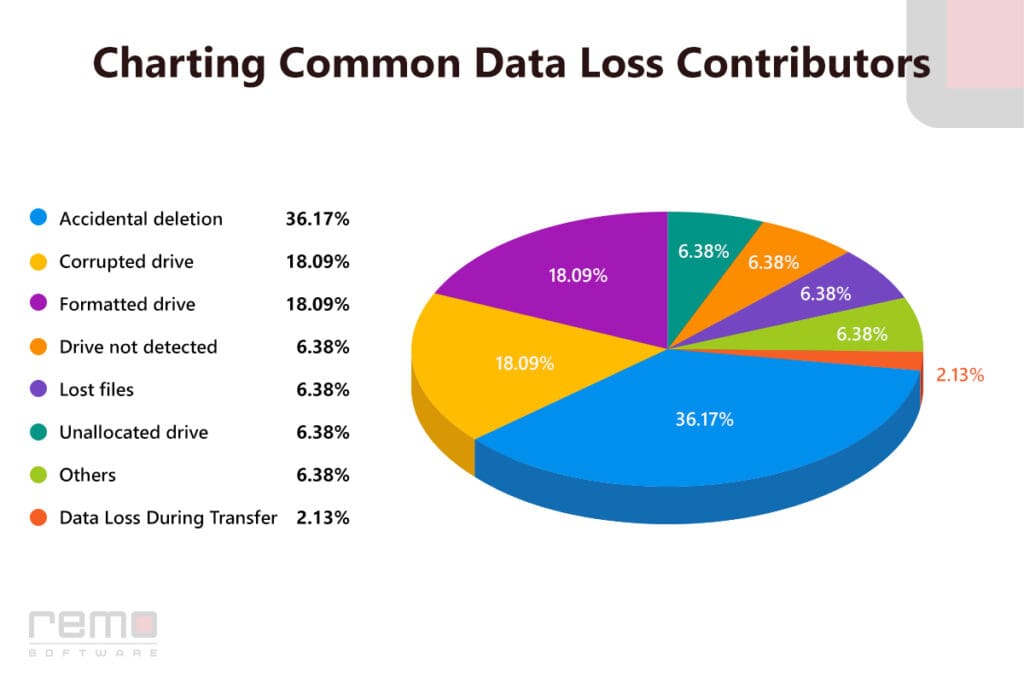
"Awareness of data loss and how to prevent it is a key step in sustaining healthy digital lifestyles. Even in the face of technology advances, human error and carelessness cause data loss, which impacts productivity, safety and mental health. This annual report is a regular reminder to individuals and organizations to adopt practices that guard against data loss. The categorization of issues and data on underlying patterns offers valuable and eye-opening insights for all."
- Dr. Madanmohan Rao
Tech Thought Leader
I. Shift+DEL- OOPS! Accidental Deletion!
Over 56.38% of data loss seen was due to Human Error. A simple slip of the keys and files were being accidentally, permanently deleted. Big mistake, huge!
Despite the luxury of having multiple backup options, it goes without saying that you must be extremely careful before you press those two buttons, Shift+DEL, to permanently delete files.
When we dug deeper, we learned that over 55.88% of the deletions were from hard drives (63.16% on internal drives and 36.84% on external hard drives).
Solid state drives (SSDs) came second with about 26.47% of the accidental deletion cases (66.67% of cases were on external SSDs, only 33.33% of them happened on internal SSDs). This was followed by Memory Cards and iPods at 14.71% and 2.94%, respectively.
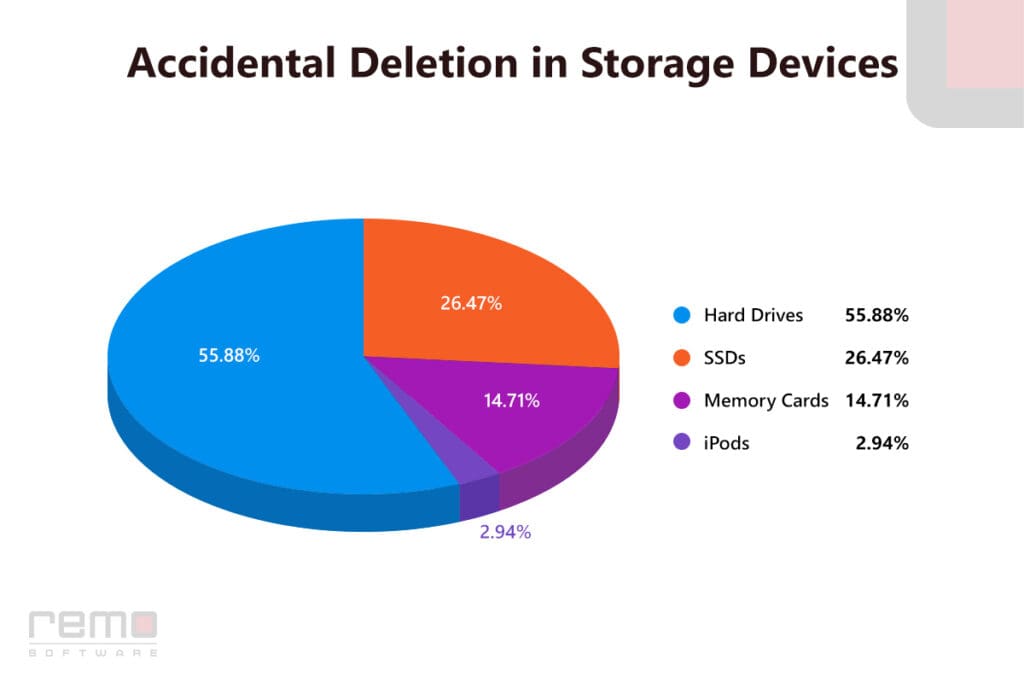
"Many of the biggest drivers of data loss in 2023 are preventable. For example, you can store a copy of data in the cloud to safeguard your data in the case of hard drive failure or corruption. It's also important to double-check that you have copies of your data before formatting drives or using the Shift+Delete shortcut."
- Michael Graw
Tech Specialist
II. Drive Corruption
Drive corruption was next in the line-up, with 18.09% of data loss caused by corrupted storage devices.
While storage devices have evolved over a period, and become faster and more reliable, they aren’t immune to Murphy’s Laws and do need sturdy protection.
Memory cards saw the majority of the drive corruption, contributing to over 64.71% of the cases. Hard drives came in second with 23.53% of cases, which were all observed on external hard drives. USB Flash Drives added to about 11.76% of the cases.
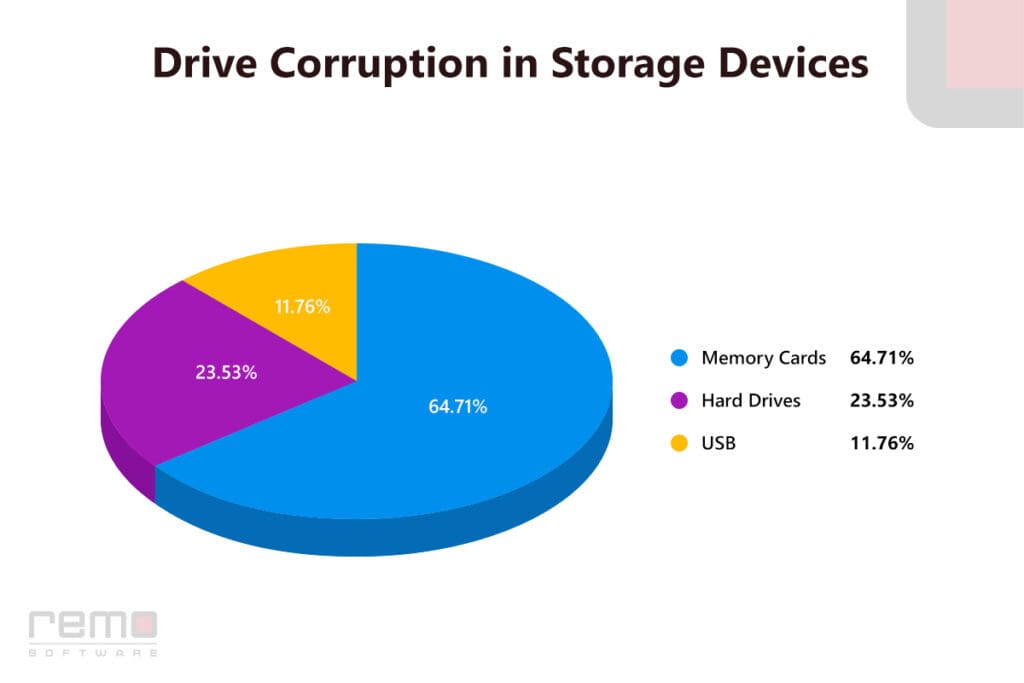
III. Format Drive: Gone in 60 seconds
Did you know that data gets destroyed in seconds – yes, seconds, as few as even 10 to 15 seconds – when you format a storage device?
Now imagine you hit that format button without taking a backup… you get where this is going.
18.09% of all the data loss reported in 2023 was due to formatted drives. Close to half of that was from formatted memory cards, 47.06% to be precise.
Hard drives equally contributed to 41.18% of data loss due to formatted drives (50% happening on external hard drives and the other half on internal hard drives).
Finally, about 11.76% of the cases were on SSDs.
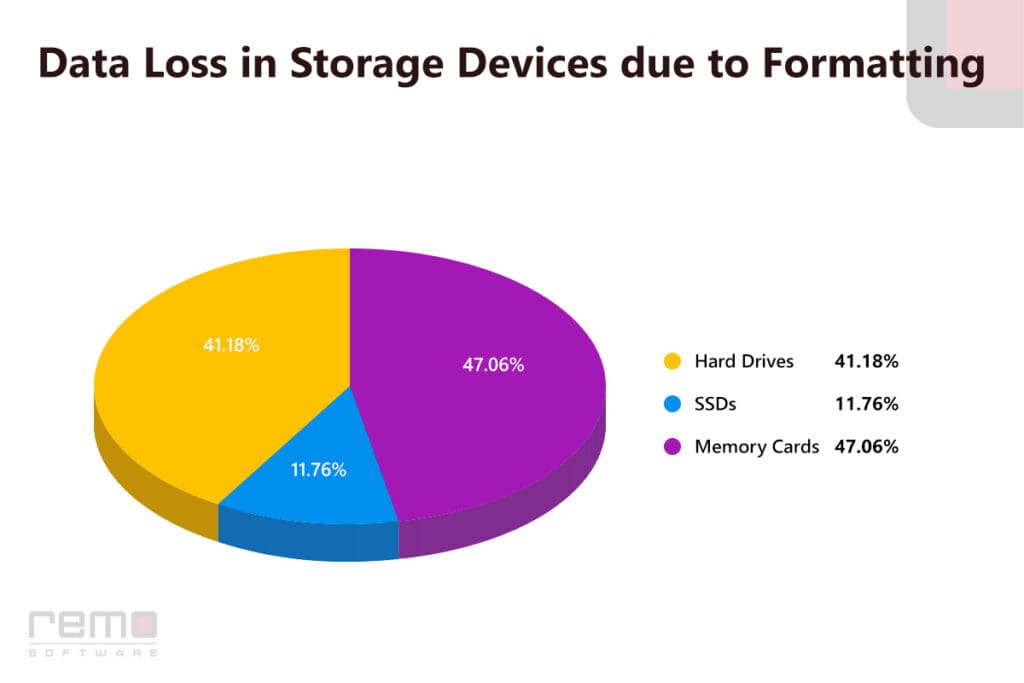
IV. Lost Files: Nowhere to be Found
“It was right there, I know where I put it!” How often have you had this thought for something you could not find? Well, sometimes files go missing too.
In fact, 6.38% of all data loss was from files going AWOL and folks going nuts trying to find them.
This issue mainly occurred on SSDs, with more than 42.86% of the cases (Internal SSDs had a significant share with more than 75%, and external SSDs stood at 25%).
The remaining 42.86% of data loss occurred on Secure Digital (SD) cards, which is not surprising as they are commonly used on multiple devices and are prone to virus or malware intrusions.
All that to say, a virus or malware probably stole the data.
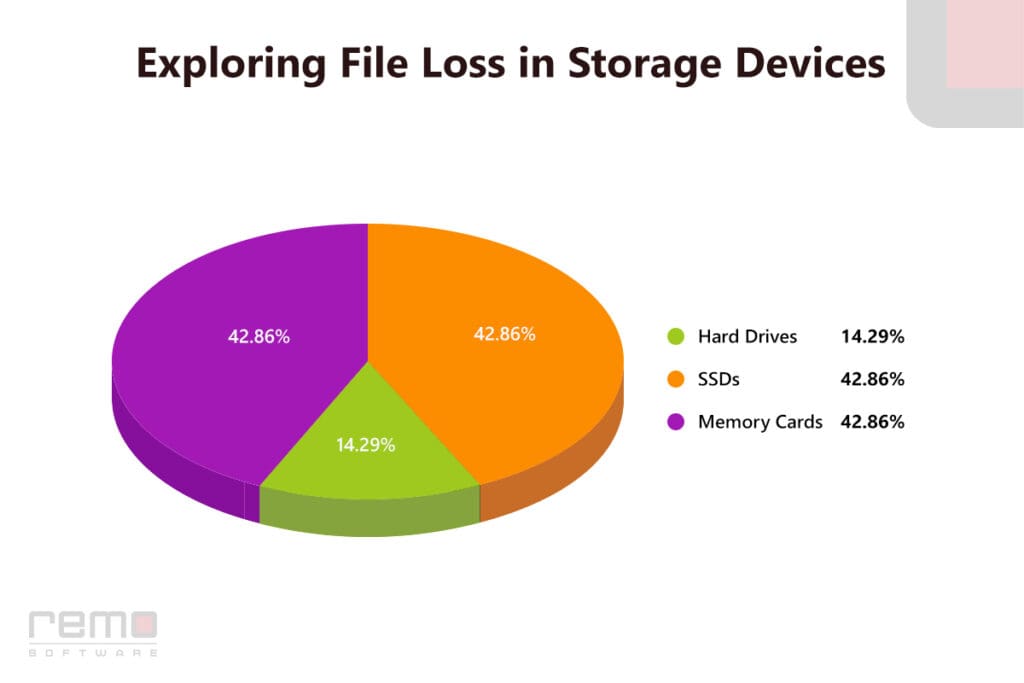
V. The Curious Case of Undetected Drives
Drives continued to play hide and seek through 2023, causing significant problems. Undetected drives account for 6.38% of data loss cases.
Most people try DIY when this happens and without professional tech help, the result is normally… you guessed it… Data Loss. As the cops say, don’t cross the yellow line, don’t touch anything, and let the professionals do their job.
The Undetected Drive issue was mainly seen on memory cards, accounting for 66.66% of cases (While SD cards faced most problems at 50.00%, the other 16.67% were Compact Flash Cards). This was followed by both SSDs and hard drives at 16.67% respectively.
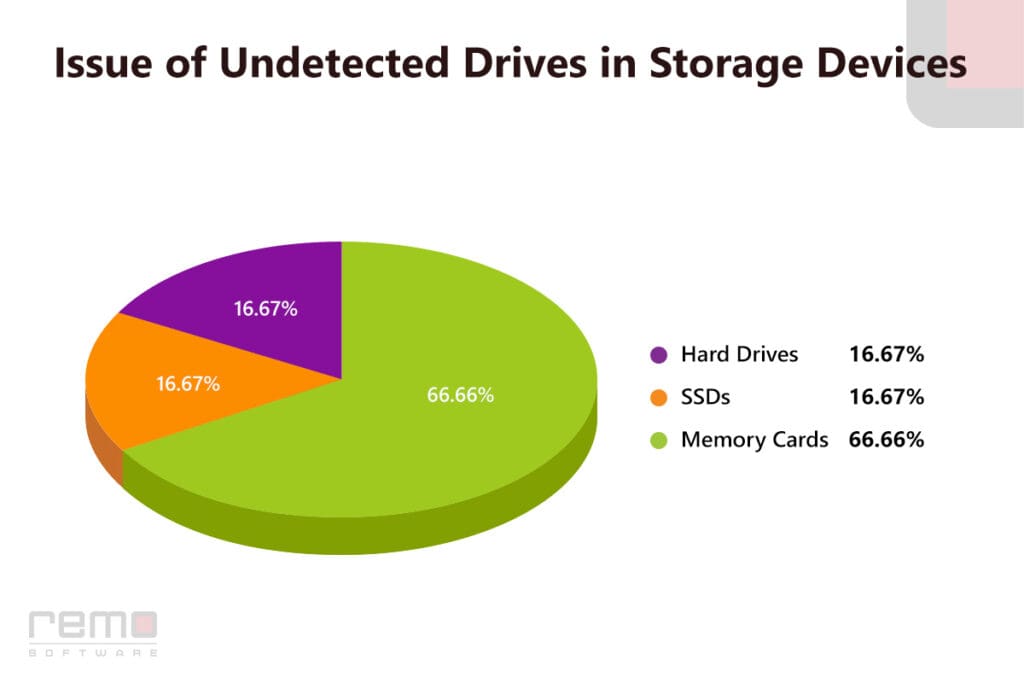
VI. Unallocated Drives: Orphaned Drives with No Names
Although a hard drive getting unallocated is not a common issue, 6.38% of data loss cases seen were due to unallocated drives. As expected, close to 50.00% of the unallocated drives were hard drives, followed by memory cards at 33.33% and SSDs at 16.67%.
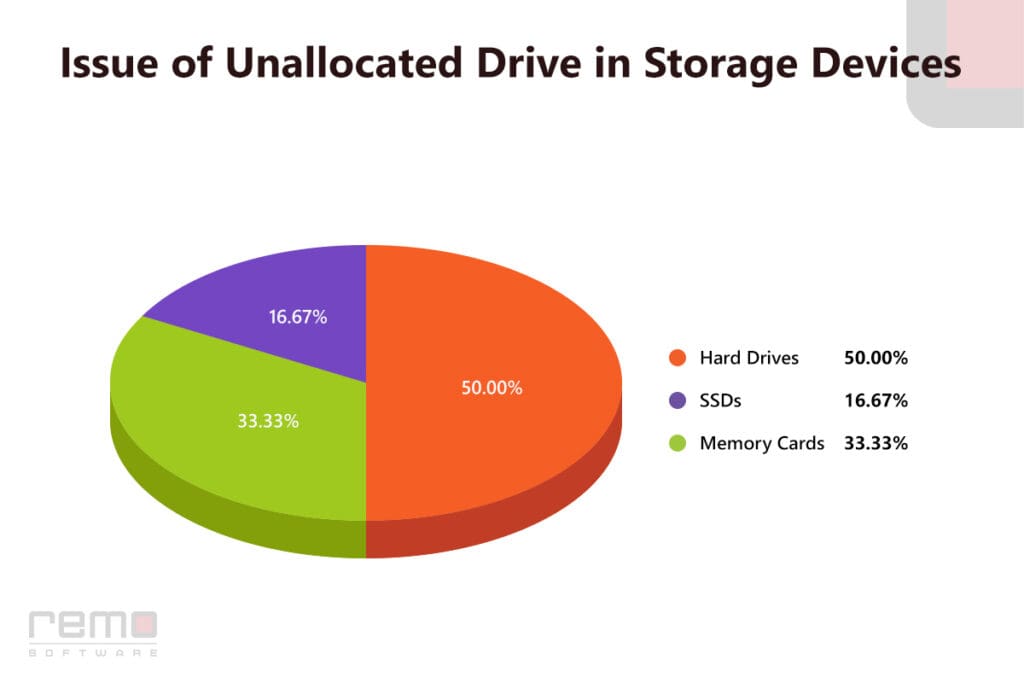
VII. Lost in Transition: Data Loss During Transfers
When transferring data from one device to another, any interruptions during the process can lead to irreversible data loss. Approximately 2.13% of data loss incidents occur during this transfer process.
VIII. The Rest of the Line Up
The remaining 6.38% of data loss was due to various other reasons. These data loss scenarios were observed across SSDs at 50.00%, memory cards and hard drives at 25% each.
"Data Protection is of so much prime importance these days, this report is a step from us to ensure that adequate emphasis to protect data is given by Consumers and also this report can provides very valuable insights to corporations who are looking at Data Loss Prevention (DLP) implementations."
- Omer Faiyaz
CEO, Remo Software
Data Loss in Storage Devices - The Numbers
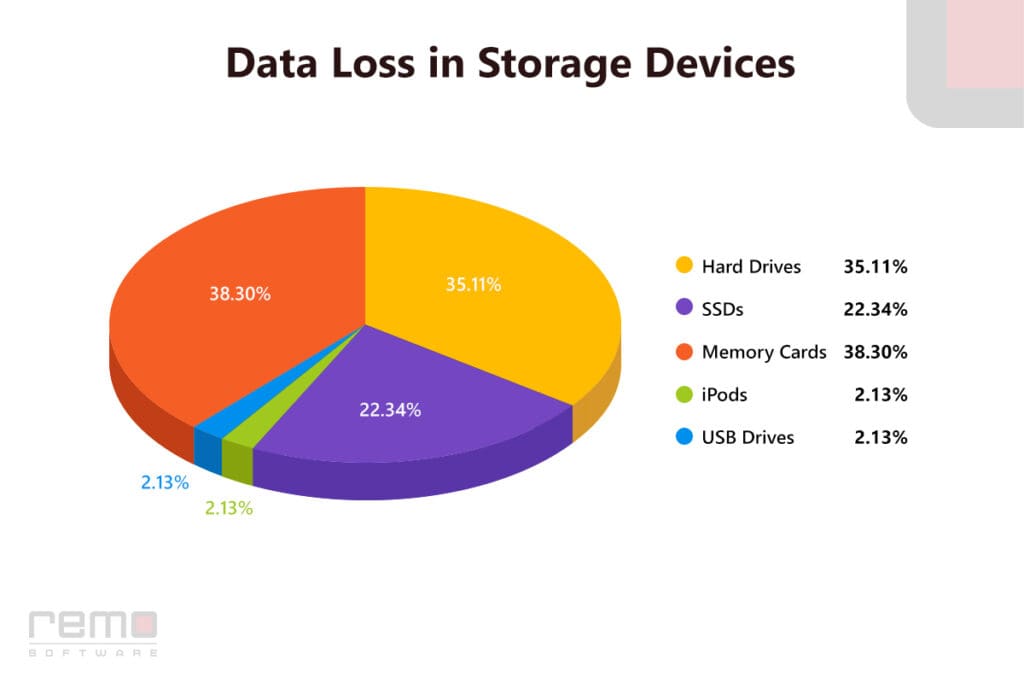
I. Hard Drives
Hard drives are a significant contributor in data loss scenarios, constituting over a third of the incidents, 35.11% to be precise. Their popularity in both personal and business environments makes them an easy target for data loss, and there is a severe need for implementing robust data protection strategies.
II. SSDs
The world is moving from traditional hard disks to Solid State Drives (SSDs). The uptick in usage leads to an uptick in associated data loss. SSDs contributed to 22.34% of all the data loss cases seen.
Despite their reputation for speed and reliability, our findings highlight the need to address vulnerabilities specific to SSDs, especially the TRIM feature, and to have a solid Data Loss Protection (DLP) plan in place.
III. Memory Cards
Memory cards, all the media we use on cameras, flash cards… are portable, but not immune. Memory cards pose a notable risk both due to their portable nature and all the swapping across devices, contributing to over 38.29% of data loss incidents. Professionals using memory cards in cameras also need to be careful to ensure they don’t lose that perfect shot.
IV. iPods
While the iPod may not be a primary data storage device for most, let’s face it – these babies are nearly extinct. 2.13% of data loss incidents occurred on iPods.
V. USB Flash Drives
Though the usage of USB drives is on the decline, for most people pen drives or USB drives provide that quick and easy data transfer option. This makes them an easy to use and easy to lose data from. Overall, USB drives contributed modestly to the total, coming in at 2.13% of the cases.
"Despite the availability of cloud backups, many individuals continue relying on conventional storage devices, leading to frequent data loss. It is crucial to implement a robust data loss prevention plan to mitigate these risks, underscoring the necessity for proactive measures despite the presence of cloud alternatives."
- John William Morales
Tech Journalist
Most Popular Lost and Found File Types – What Are People Looking to Recover
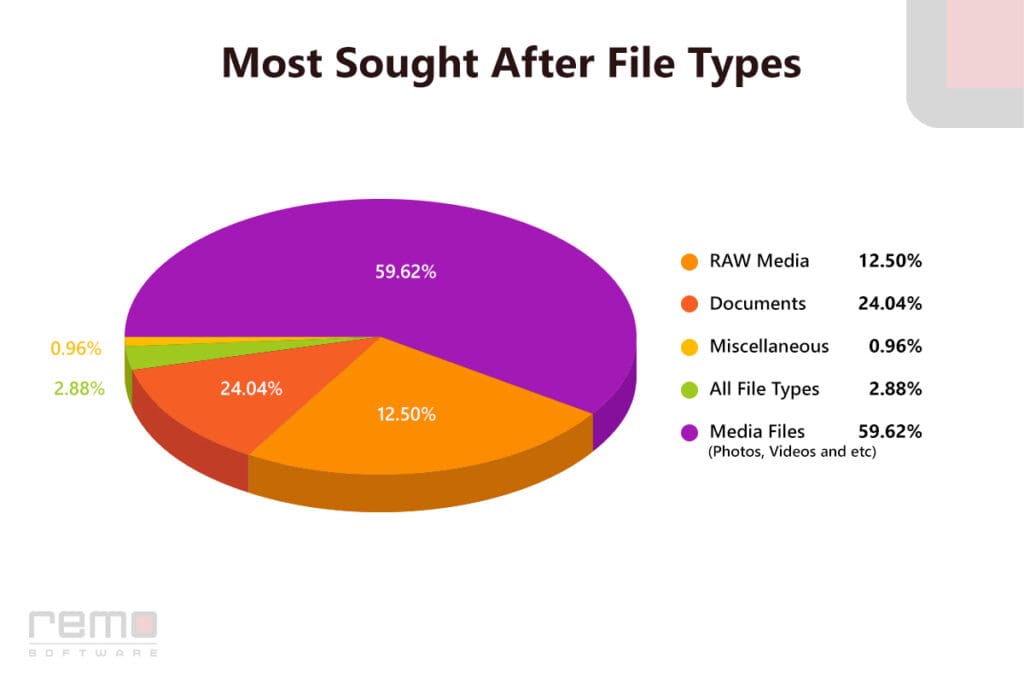
I. Photos, Videos, and other Media Files Take the Top Spot
Media files – images, videos, and audio recordings – emerged as the predominant data type at demand, constituting a significant 59.62% of users attempting to recover media files. Given the significance of media files like videos, audio, and photos predominantly at a personal level and to some extent at a business level as well. It is crucial to maintain consistent backups for your media files and handle them with utmost care.
II. RAW Media
RAW media files, unprocessed and high-quality data usually used by professional photographers and studios. Over 12.50% of users were on search of RAW media files shot on their camera.
III. Documents: Critical Information at Risk
No surprises; documents are highly vulnerable to data loss. A solid data protection strategy can help people avoid this issue. We saw that documents, including reports, spreadsheets, and text files, were on high demand with more than 24.04% of users trying to recover documents.
IV. I Want Everything
2.88% of all the people who consulted us for recovery were not specific about any file types and wanted to recover everything they had lost. This could include various file types and can be a clear case of data loss caused by events such as drive formatting or corruption.
V. Miscellaneous
The other 0.96% of users were looking for other file types, like PST, AutoCAD, BAK, and others. While these file types may seem insignificant, they can cause a significant loss when considering the prevalence of these files on devices.
“Consumers these days keep an abundance of personal documents, pictures and other important information on their various personal devices. Sadly often the data is not backed up at all, or only portions of it. What used to be stored in paper is now mostly online, meaning that protecting and backing up information is more important than ever. I strongly suggest using tools to both prevent data corruption and to ensure offsite backup exists at all times for all essential files and data.“
- Jason Foodman
Forbes Business Council Member and Entrepreneur
And there you have it - all the ways in which people lost their data and the devices from which the files went bye bye!
Remember, in dire situations, professional data recovery software or services can be a valuable resource for retrieving lost data. We want to assure our users that their privacy is of utmost importance to us. No personal data was used or disclosed in this study.